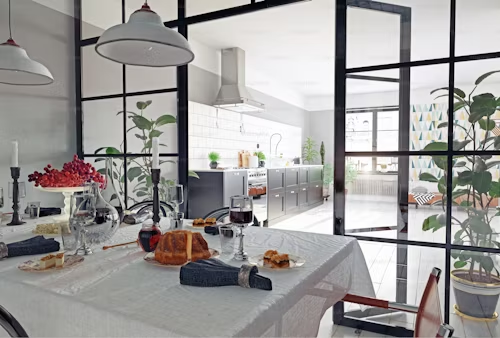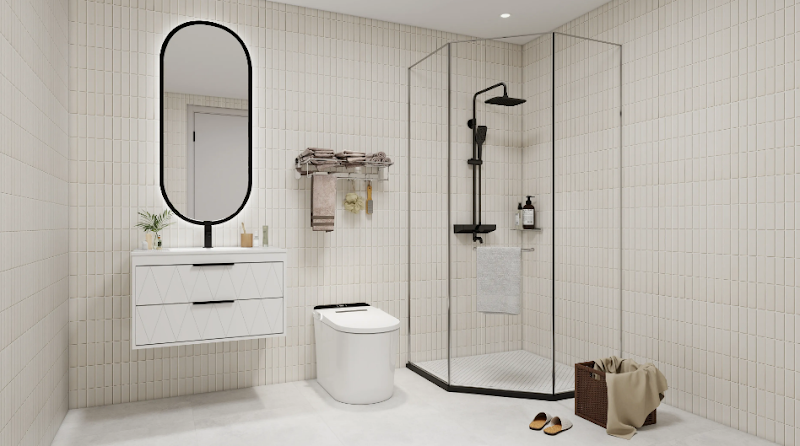Key Takeaways:
- Discover how residential glass is transforming modern homes regarding aesthetics and functionality.
- Understand the various types of glass used in home design and their specific benefits.
- Learn about energy-efficient glass solutions that contribute to sustainable living.
- Explore maintenance tips to keep your glass installations looking pristine.
Transforming Aesthetics with Glass
In modern home design, glass has emerged as a transformative material, revolutionizing aesthetics and functionality. It provides a unique opportunity to open up spaces, allowing for abundant natural light and enhancing the overall appeal of a home. Modern design trends embrace open concepts, and glass aligns perfectly with this by breaking traditional barriers and creating a seamless flow between different areas. From sleek glass walls to elegant glass balustrades, integrating glass elements can dramatically alter the perception of space, making rooms appear larger and more inviting.
For high-quality residential glass solutions, visit https://www.kennedyglass.com/residential/ to explore a range of services, from window replacements to custom glass installations. This approach seamlessly elevates the home’s interior and connects indoor and outdoor spaces. Imagine standing in a living room with floor-to-ceiling windows overlooking a garden or cityscape—the glass becomes a living picture frame, enhancing your interaction with the surrounding environment.
Types of Residential Glass and Their Benefits
When considering glass for residential spaces, it is essential to understand the variety available and the specific advantages each type offers. Common types of glass used in homes include tempered, laminated, and frosted glass. Each possesses unique characteristics tailored to specific needs and preferences.
Tempered glass is celebrated for its strength and safety features. In case of accidental breakage, it shatters into small, less harmful pieces, making it ideal for environments where safety is paramount, such as bathrooms or staircases. Laminated glass, on the other hand, consists of two or more glass layers bonded with a special interlayer. This provides enhanced security and sound insulation, making it an ideal choice for urban homes where noise reduction is crucial.
Frosted glass is often used in areas where privacy is a priority without sacrificing aesthetics, such as bathroom windows or light-diffusing partitions in open-plan spaces. Houzz offers a comprehensive guide for a closer examination of different glass types and their applications. Understanding these choices allows homeowners to make informed decisions that enhance their spaces’ utility and beauty.
Energy-Efficient Glass Solutions
In the quest for energy efficiency, energy-efficient glass has become increasingly important for homeowners looking to reduce their carbon footprint. This type of glass is designed to minimize energy loss, which is crucial in maintaining a comfortable home environment while adhering to eco-friendly practices. Energy-efficient glass includes advanced coatings like Low-E (low emissivity), which reflect heat while allowing natural light to bathe interior spaces.
Such glass types can significantly decrease energy bills by reducing the need for artificial heating and cooling. According to recent studies, using Low-E glass can cut energy costs by up to 30%, illustrating considerable financial and environmental benefits. These savings benefit homeowners economically and align with sustainable living principles, fostering a more responsible lifestyle and promoting energy conservation on a larger scale.
Incorporating Glass into Sustainable Living
As sustainability becomes a pivotal design aspect, glass installations are recognized for contributing to eco-friendly living. By utilizing recycled materials and implementing energy-efficient designs, glass is a testament to the advancement of green building practices. Glass windows, for instance, can maximize natural light, reducing reliance on electrical lighting during the day, thereby conserving energy.
Additionally, glass contributes to a healthier living environment by improving air quality through adequate ventilation. Embracing sustainable materials and practices enhances the quality of living spaces and supports our planet’s health and sustainability.
Maintenance Tips for Long-lasting Glass Installations
Maintaining the beauty and functionality of glass installations requires regular upkeep. Proper maintenance practices increase longevity and preserve the clarity and elegance of glass elements. Simple cleaning methods, such as using non-abrasive cleaners and soft cloths, help to prevent scratches and build-up, maintaining the pristine appearance of windows, doors, and partitions.
- Clean glass with gentle, streak-free cleaners to keep them spotless and transparent.
- Avoid harsh chemicals that can damage the surface and reduce the effectiveness of protective coatings.
- Regularly inspect and repair glass for chips or cracks to prevent further damage.
Implementing these practices ensures that your glass installations remain in top condition and look as stunning as the day they were installed.











